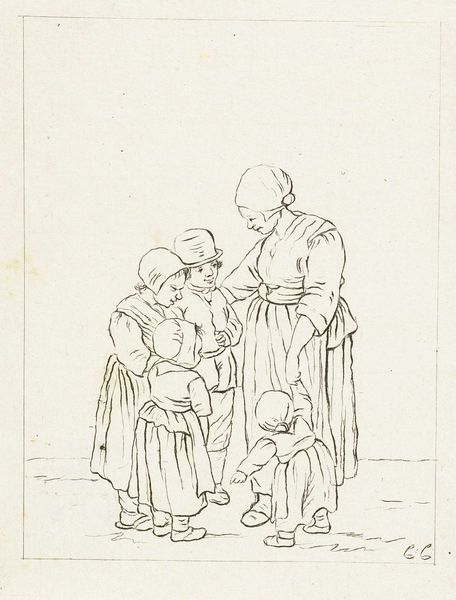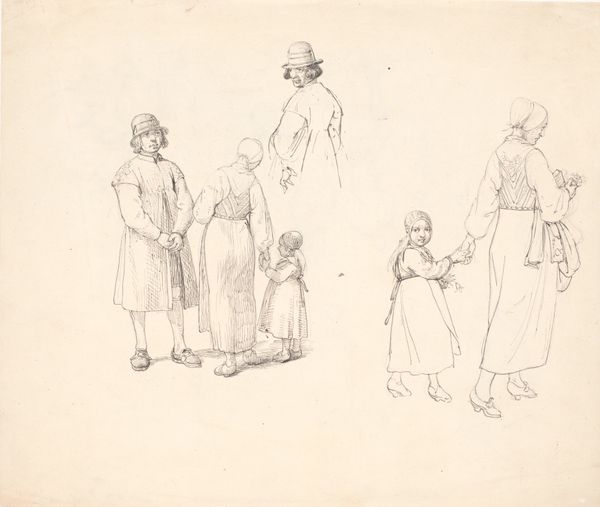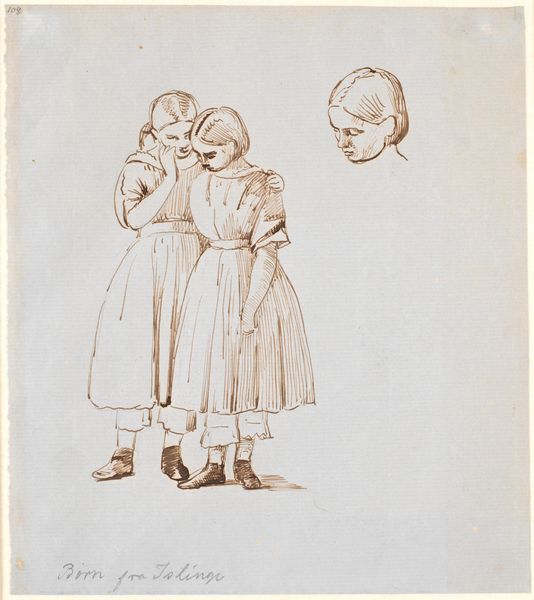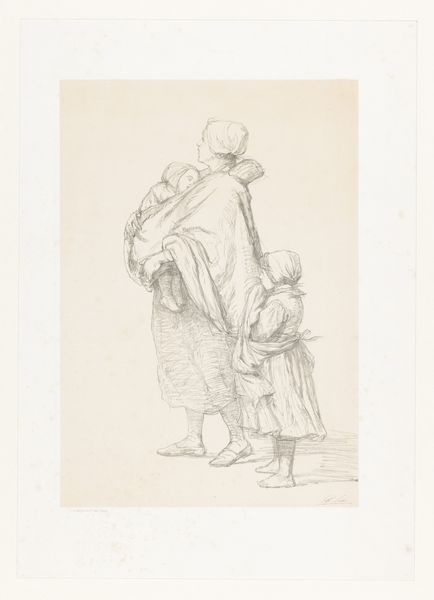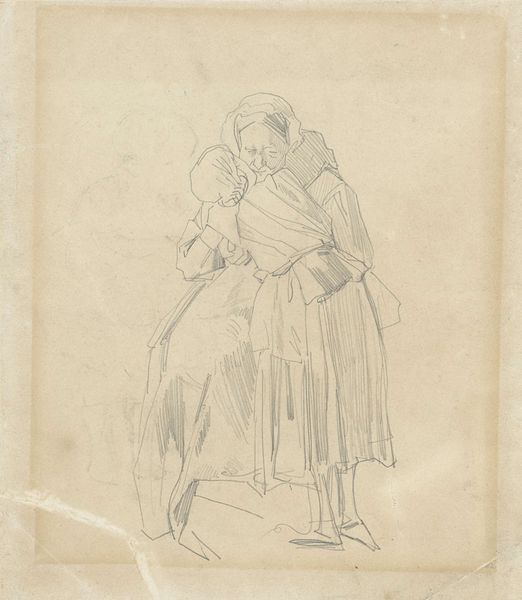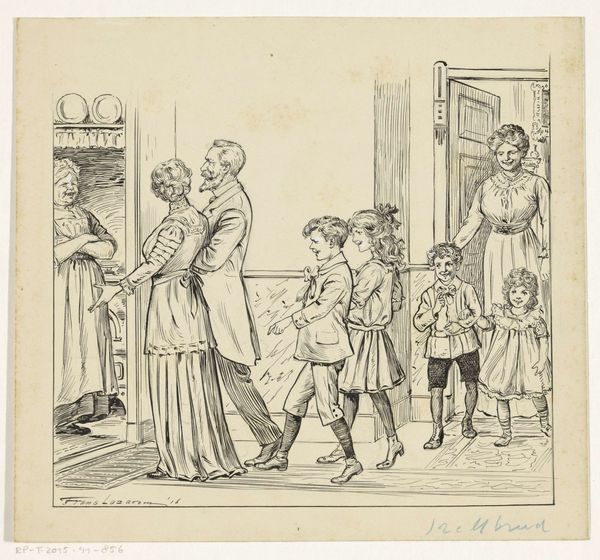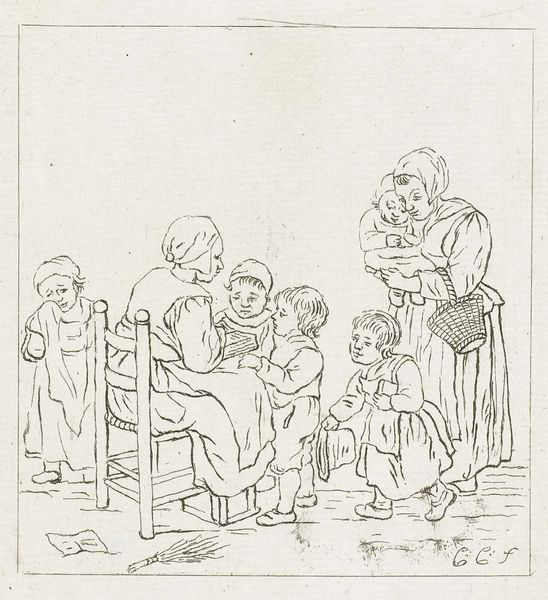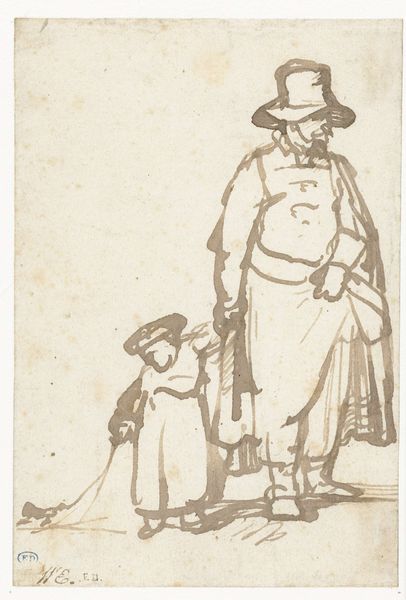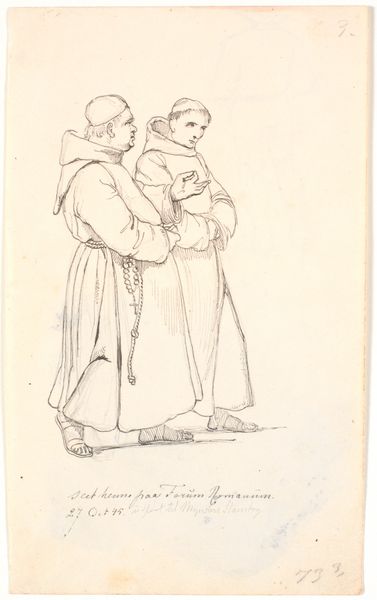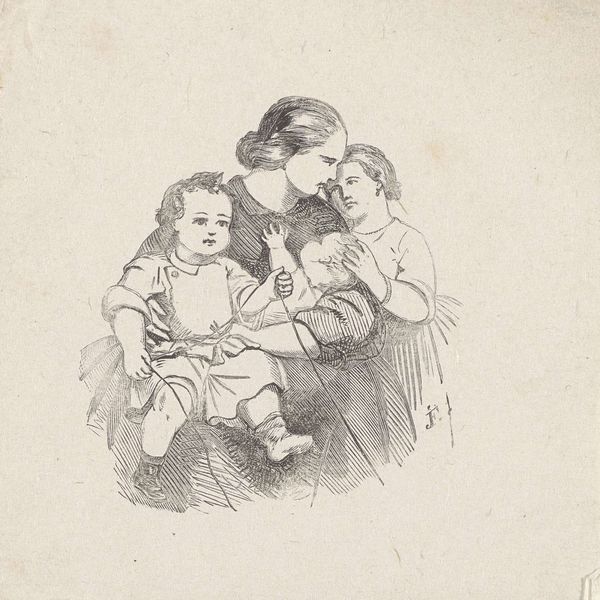
drawing, paper, ink
#
portrait
#
drawing
#
comic strip sketch
#
mother
#
figuration
#
paper
#
personal sketchbook
#
ink
#
idea generation sketch
#
sketchwork
#
ink drawing experimentation
#
pen-ink sketch
#
sketchbook drawing
#
genre-painting
#
storyboard and sketchbook work
#
sketchbook art
#
initial sketch
Dimensions: width 103 mm, height 129 mm
Copyright: Rijks Museum: Open Domain
Editor: This is "Two Mothers in Conversation" by Pieter de Mare, dating back to the late 1770s. It's an ink drawing on paper and evokes a sense of quiet domesticity. What stands out to me is the simple, almost cartoonish style. What do you see in this piece? Curator: Indeed, its simplicity is deceptive. Think of the visual vocabulary employed. The grouping itself - two women encircled by children. What does that evoke? Beyond the surface portrayal of mothers talking, consider what ‘mother’ signified in the 18th century – notions of care, morality, even nationhood. Their very posture hints at the weight, cultural weight, of those expectations. Editor: That's fascinating. It's like the image is a vessel for all these ideas. Do you think the lack of detail – the sketch-like quality – impacts how those ideas come across? Curator: Absolutely. De Mare uses a universal ‘mother’ symbol rather than hyper-realistic detail, precisely to allow those societal ideas to resonate more broadly. It becomes less about these specific women, more about *womanhood* itself, wouldn’t you say? We project our own cultural memories onto it. Editor: I do. Seeing it as a cultural symbol makes it feel so much richer. It is no longer a simple sketch. Curator: Precisely. Symbols evolve, acquire layers of meaning through the ages, linking us to the past. Every curve, every grouping then serves as a potential access point to better understanding history. Editor: I’ll definitely look at art with a more symbolic eye. Thanks. Curator: And I appreciate the reminder to consider how accessible lines and shapes can connect with broad experiences.
Comments
No comments
Be the first to comment and join the conversation on the ultimate creative platform.
